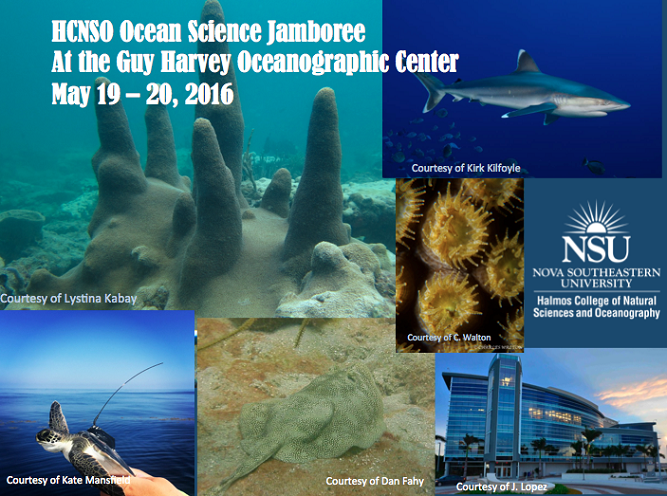Location
Guy Harvey Oceanographic Center Facility
Start
5-19-2016 11:45 AM
End
5-19-2016 12:00 PM
Abstract
The genome assembly and annotation of Asian seabass (Lates calcarifer) , a marine teleost with aquaculture relevance will be described, an initiative of Genome 10K . Though > 500 eukaryotic genome sequences are available in public repositories, the majority are highly fragmented with incomplete assemblies, so considerable effort and resources are often spent to improve their quality. In the present study, PacBio long read sequencing , genetic and optical mapping, and syntenic inference were combined to build a chromosome-length assembly with a contig N50 size over 1 Mb and scaffold N50 size over 25 Mb that span ~90% of the genome was achieved.
The population structure of L. calcarifer species complex was analyzed by re-sequencing 61 individuals representing various regions across the species’ native range from North-Western India across South-East Asia and Australia to Papua New Guinea. Tandem repeat and SNP annotation identified high levels of genetic diversity and confirmed earlier indications of a population stratification comprising three clades with signs of admixture apparent in the South-East Asian population. The quality of the Asian seabass genome assembly far exceeds that of any other fish species, and will serve as a new standard for fish genomics.
The Asian arowana (Scleropages formosus), one of the world’s most expensive cultivated ornamental fishes, is an endangered species. It represents an ancient lineage of teleosts: the Osteoglossomorpha a high-quality chromosome-level reference genome of a female golden-variety arowana will be presented using a combination of deep shotgun sequencing and high-resolution linkage mapping. In addition, two draft genome assemblies for the red and green varieties were generated and assessed. Phylogenomic analysis supports a sister group relationship between Osteoglossomorpha (bonytongues) and Elopomorpha (eels and relatives), with the two clades together forming a sister group of Clupeocephala which includes all the remaining teleosts. The arowana genome retains the full complement of eight Hox clusters unlike the African butterfly fish (Pantodon buchholzi), another bonytongue fish, which possess only five Hox clusters. Differential gene expression among three varieties provides insights into the genetic basis of colour variation. A potential heterogametic sex chromosome is identified in the female arowana karyotype, suggesting that the sex is determined by a ZW/ZZ sex chromosomal system. The high-quality reference genome of the golden arowana and the draft assemblies of the red and green varieties are valuable resources for understanding the biology, adaptation and behavior of Asian arowanas.
Vij et al Chromosomal-Level Assembly of the Asian Seabass Genome Using Long SequenceReads and Multi-layered Scaffolding " PLOS Genetics DOI:10.1371/journal.pgen.1005954 April 15, 2016
Bian et al The Asian arowana (Scleropagesformosus) genome provides new insights into the evolution of an early lineage of teleosts Scientific Reports | 6:24501 | DOI: 10.1038/srep24501 19 April 2016
Included in
Genomic assembly analyses of Asian teleost species seabass (Lates calcarifer) and arowana (Scleropages formosus)
Guy Harvey Oceanographic Center Facility
The genome assembly and annotation of Asian seabass (Lates calcarifer) , a marine teleost with aquaculture relevance will be described, an initiative of Genome 10K . Though > 500 eukaryotic genome sequences are available in public repositories, the majority are highly fragmented with incomplete assemblies, so considerable effort and resources are often spent to improve their quality. In the present study, PacBio long read sequencing , genetic and optical mapping, and syntenic inference were combined to build a chromosome-length assembly with a contig N50 size over 1 Mb and scaffold N50 size over 25 Mb that span ~90% of the genome was achieved.
The population structure of L. calcarifer species complex was analyzed by re-sequencing 61 individuals representing various regions across the species’ native range from North-Western India across South-East Asia and Australia to Papua New Guinea. Tandem repeat and SNP annotation identified high levels of genetic diversity and confirmed earlier indications of a population stratification comprising three clades with signs of admixture apparent in the South-East Asian population. The quality of the Asian seabass genome assembly far exceeds that of any other fish species, and will serve as a new standard for fish genomics.
The Asian arowana (Scleropages formosus), one of the world’s most expensive cultivated ornamental fishes, is an endangered species. It represents an ancient lineage of teleosts: the Osteoglossomorpha a high-quality chromosome-level reference genome of a female golden-variety arowana will be presented using a combination of deep shotgun sequencing and high-resolution linkage mapping. In addition, two draft genome assemblies for the red and green varieties were generated and assessed. Phylogenomic analysis supports a sister group relationship between Osteoglossomorpha (bonytongues) and Elopomorpha (eels and relatives), with the two clades together forming a sister group of Clupeocephala which includes all the remaining teleosts. The arowana genome retains the full complement of eight Hox clusters unlike the African butterfly fish (Pantodon buchholzi), another bonytongue fish, which possess only five Hox clusters. Differential gene expression among three varieties provides insights into the genetic basis of colour variation. A potential heterogametic sex chromosome is identified in the female arowana karyotype, suggesting that the sex is determined by a ZW/ZZ sex chromosomal system. The high-quality reference genome of the golden arowana and the draft assemblies of the red and green varieties are valuable resources for understanding the biology, adaptation and behavior of Asian arowanas.
Vij et al Chromosomal-Level Assembly of the Asian Seabass Genome Using Long SequenceReads and Multi-layered Scaffolding " PLOS Genetics DOI:10.1371/journal.pgen.1005954 April 15, 2016
Bian et al The Asian arowana (Scleropagesformosus) genome provides new insights into the evolution of an early lineage of teleosts Scientific Reports | 6:24501 | DOI: 10.1038/srep24501 19 April 2016


